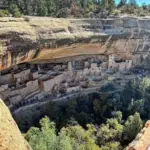Site Engineers Play an important role for the success or failure of any project; they are the front force of any construction or consultant company, they have to face harsh weathers, large amount of man power; and they comes in direct execution of any project; to know more about site engineers, what are its responsibilities; what are the skills required; move to this post;
Who is site engineer?
A site engineer in civil construction is a person who knows civil engineering practices and implement the same at site to perform planning and executing various construction works at site while protecting the general public and trying to complete the project as per quality and timeline defined.
Also Read: Construction Project Management Tips
Mostly civil site engineer performs supervision works that not just execute the work at site but also manage labor and various other resources at site. You need to have strong technical and practical skills to assist site and project managers. A site engineer mostly end up as a project manager or construction manager.

Key points for civil site engineer
Also Read: Site Engineer, skills, salary, education required
Following are few general points to remember for civil site engineers to make the construction work easier while maintaining the quality of construction.
- 1.Minimum diameter of bars used in slab = 8mm.
- 2. Minimum diameter of bars used in column = 12mm.
- 3. Minimum number of bars used in square or rectangular column = 4 bars.
- 4. In Cantilever Beam Tension Zone is Up & compression zone is Below where as in simply supported Beam Compression Zone is above & Tension is Below
- 5.Lapping is not allowed for the bars having diameters more than 36 mm.
- 6. Chair spacing maximum spacing is 1.00 m (or) 1 No per 1m2.
- 7. For dowels rod minimum of 12 mm diameter should be used.
- 8. Chairs minimum of 12 mm diameter bars to be used.
- 9. Longitudinal reinforcement not less than 0.8% and more than 6% of gross C/S.
- 10. Minimum bars for square column is 4 No’s and 6 No’s for circular column.
- 11. Main bars in the slabs shall not be less than 8 mm (HYSD) or 10 mm (Plain bars) and the distributors not less than 8 mm and not more than 1/8 of slab thickness.
- 12. Minimum thickness of slab is 125 mm.
- 13. Dimension tolerance for cubes + 2 mm.
- 14. Density of Construction Material
- 15. Maximum diameter of bars used in slab = 1/8 × thickness of slab.
- 16. Free fall of concrete is allowed maximum to 1.50m.
- 17. Water absorption of bricks should not be more than 15 %.
- 18. PH value of the water should not be less than 6.
- 19. Compressive strength of Bricks is 3.5 N / mm2.
- 20. In steel reinforcement binding wire required is 8 kg per MT.
- 21. In soil filling as per IS code, 3 samples should be taken for core cutting test for every 100m2.
- 22. Samples from fresh concrete shall be taken and at least a set of 6 cubes of 150mm shall be prepared and cured. 3 Cubes each at 7 days and 28 days shall be tested for compressive strength. The test results should be submitted to engineer for approval. If results are unsatisfactory necessary action/rectification/remedial measures has to be exercised.
- 23. Water used for both mixing and curing shall be clean and free from injurious amounts of oils, acids, alkali, salts, sugar and organic materials or other substances that may be deleterious to concrete or steel. The PH. shall be generally between 6 and 8.
- 24. Lap length for M20 concrete:
- Columns – 45d
- Beams – 60d
- Slabs – 60d
- 25. Standard size of brick = 190mm×90mm×90 mm = 19cm×9cm×9cm.
- 26. A good brick clay contains 20 to 30% of alumina, 50 to 60% of silica and the remaining constituents are Lime, Magnesia, Sodium, Potassium, Manganese and iron oxide.
- 27. Colour of good brick is deep red, cherry or copper coloured.
- 28. Compressive strength of bricks is 3.5 N/mm2.
- 29. Ordinary Portland cement consists of 62 to 67% of Lime.
- 30. The initial setting time of ordinary portland cement should not be less than 30 minutes.
- 31. The final setting time of ordinary portland cement should not be more than 10 hours.
- 32. Initial and Final setting time of cement is determined by Vicat’s apparatus.
- 46. The normal consistency of portland cement is about 25%.
- 47. When concrete is to be laid under water, Quick setting cement is used.
- 48. Maximum free fall of concrete allowed to 1.50m.
- 49. Curing time of RCC Members for different types of cement
- Super Sulphate cement: 7 days Ordinary Portland cement
- OPC: 10 days
- Minerals & Admixture added cement: 14 days
- 50. Deshuttering Period of RCC member
- 51. Test On Fresh Concrete
- (a). Slump Test – Workability. (b). Compacting Factor. (c). Vee-Bee Test.
- 52. Test On Hardened Concrete
- (a). Rebound (Schmidt) Hammer Test. (b). Ultrasonic Pulse Velocity Test.
- 53. The excess of silica in the clay makes the brick brittle and weak.
- 54. Process of manufacturing of bricks consists of Preparation of brick clay, Moulding bricks, Drying of bricks and Burning of bricks.
- 55. Moulding of bricks may be hand moulding or machine moulding.
- 56 .The burning of dry bricks is done either in clamp or in a kiln.
- 57. The ingredients of ordinary cements are Lime, Silica, Alumina, Calcium sulphate, Iron oxide, Magnesia, Sulphur & Alkali’s.
- 58. Ordinary Portland cement consists of 62 to 67% of Lime.
- 59.Slump Range of concrete
- 60. Electrical conduits shall not run in column.
- 61. Earth work excavation for basement above 3 m should be stepped form.
- 62. Any back filling shall be compacted 95% of dry density at the optimum moisture content and in layers not more than 200 mm for filling above structure and 300 mm for no structure.
- 63. soling is specified the soling stones shall be laid at 45° to 60° inclination (and not vertical) with interstices filled with sand.
- 64. A set of cube tests shall be carried out for each 30 cum of concrete / each levels of casting / each batch of cement.
- 65. Water cement ratio for different grades of concrete shall not exceed 0.45 for M20 and above and 0.50 For M10 / M15.
- 66. For concrete grades M20 and above approved admixture shall be used as per mix design requirements.
- 67.Cement shall be stored in dry places on a raised platform about 200mm above floor level and 300mm away from walls. Bags to be stacked not more than 10 bags high in such a manner that it is adequately protected from moisture and contamination.
- 68. Cube Quantity
- 69. Height of window = 2.1m.
- 70. Minimum thickness of lintel = 15cm
- 71. 1 bag of cement = 1.25 cubit feet = 0.0347 cubic meter.
- 72. No. of cement bags in 1m^3 = 28.8 bags.
- 73.Civil Site Engineer Responsibilities on Construction Site:
- The Following are some important duties and responsibilities of civil site engineer has to done on construction site.
- Interpretation of Drawing
- Preparing Bar Bending Schedule
- Allotting Work to Labors
- Supervision of Construction Work
- Preparing Schedule of Material Used and Available
- Plotting Line – Level on Construction Site
- Preparing Work Chart Schedule
- Checking Steel Work of Slab, Beam, & Column Before Concreting
- Supervision Of The Curing Process
- Supervision Of The Curing Process
- Keeping Note of Each and Every Casting Work
- Much Other Work
- 74.What Is BoQ?
- BoQ means bill of quanity is a document prepared by a cost estimator to calculate the exact costing of project work by multiplying item work by their rate. It is the most important document for tendering and contracting. Bill of quantity gives an idea about the cost of a project that is tendering firm willing to offer.
- 75.Top Civil Engineering Software
- AutoCAD
- SAP 2000
- Staad Pro
- ETABS
- Primavera
- Revit
- ARCGIS for Surveying
- 3DS Max – Modeling
- MX Road – Road Design and Analysis
- Google Sketch UP
- StormCAD ( storm sewer design )
- WaterCAD ( is a software extensively utilized for hydraulic and water quality modeling applications )
- Microsoft Project (MS Project)
- Easy-Pro Builders Estimator
- STACK Takeoff & Estimating Software
- 76.Pcc-profile corrective course also
- 77. curing -protecting the freshly concreted surface from water evaporation.
- 78. scaffolding -supporting system for form work.
- 79. Ponding-keeping water over a fresh floor etc.
- 80.splicing-giving lap to steel for further heights.
- 81. Casting- concreting
- 82. Admixture- chemicals used for accelerating or reducing water content for workability of concrete.
- 83. schedule-of bar bending or work
- 84. Dressing-cutting and make plain the earth’s surface for placing pccaggregate – sand or metal.
- 85. Reinforement-steel used for rcc.
- 86. Masonry-constructing brick,block and stone walls.
- 87. mortar-cement and sand mix.
- 88.Sealant : A flexible, rubbery type of material that is used to seal gaps in a joint.
- 89.Drywall: A panel made from gypsum plaster that is wrapped in cardboard. It is commonly used as a fundamental material for framing a building.
- 90.Skirting: Material that covers up the joint between the floor and a wall in the interior of a building, for aesthetic purposes.
- 91.Monocrete Construction: A construction method that uses precast concrete panels which are bolted together to make concrete structures.
- 92.Weight of Bar is calculated using formula D2/162 (D = Dia of bar in mm)
- 93. The No. of Bricks required for 1m3 of Brick masonry are 550 bricks.
- 94.What is the Validity of use of Cement?
- It is 3 months from Manufacturing
- 95.What is Segregation of Concrete? and why its caused?
- The separation of sand, cement, aggregates in concrete is called
- Separation of Concrete.
- Its caused due to improper water cement ratio.
- Also caused for poured above 1.5 height.
- 96.Calculations for no of stirrup in a abeam?
- Clear Span/ c/c Spacing+1
- 97.What is the angle of staircase flight?
- It is between 25 degree to 40 degree.
- 98.How much bricks need for 115 mm thick brick work?
- 56 nos / Sqm
- 99.How much bars should be lapped in a bar bending zone?
- Not more than 50%
- 100.What is the minimum Hook length for bars?
- It is 9D. (D-is dia of bar)
What are the top 5 responsibility of civil site engineer?
Some key tasks performed by site engineer include:
- Overseeing construction work as per plan and schedule
- Managing workforce and labor
- Manipulating resources to optimize usage
- Setting out site plans
- Undertaking and performing surveys
- Checking technical designs and drawings to ensure they’re correct.
- Supervise labor and site staff
A civil engineer is responsible for designing the important infrastructure that people rely on every day in the built environment, from foundations to tunnels, sewers, and water mains, and of course, all of our roads and bridges. And this is what I chose to specialize in, specifically as a bridge builder.
A civil engineer’s involvement in a project begins during the very first stages of when a project need arises, from many things such as repairing an existing structure to building a brand new one. Our role in a construction project includes everything from the design planning, scheduling, construction, and ongoing input, monitoring, and inspection throughout the course of the project.
Like Us on Facebook!
I really enjoy being on site and interacting with the project team to overcome obstacles every day by using my engineering knowledge and field experience to solve problems and find creative solutions to difficult challenges. Once a project is completed, there really are no words to describe the pride and satisfaction that I feel, seeing the tangible result of what several months of collaborative effort and dedicated teamwork have created.
Subscribe Us on YouTube!
There really is nothing like the feeling of pure job satisfaction that you get when you have the opportunity to make the improvements we create and see the community enjoying the infrastructure we build for years to come in the many different neighborhoods that we work in. To be an engineer, to be a good engineer, you need to have a certain resilience to you that keeps you coming back for more. Until you face that challenge or solve that problem, there is no such thing as a problem that’s too hard to solve or an obstacle that’s too big to overcome.
Your team around you, in turn, is constantly looking to you for answers and direction. So in essence, this is a profession that naturally selects leaders, and this is something that I knew I wanted to be from a very young age. I studied civil engineering at university and had the privilege of meeting many incredible mentors and colleagues during my time there. However, there has never been a single person who taught and continues to teach me more about the time-tested engineering principles that govern the way that things actually come together in practice than my father, who also happens to be my best friend and the founder of Bridgecon Construction.
In my role as an engineer and operations manager of my company, I am responsible for the day-to-day execution of our construction activities, which includes the oversight of our various projects. Along with my site superintendents and project management team, I’m responsible for key elements of our daily operations, such as resource allocation, schedule management, productivity and quality control, and labor relations.
Salary expecctations
Salary expectations range from 50 to 60,000 out of school, depending on your pre-grad experience and exposure level, and then upwards from there. A good engineer is easily able to clear a hundred thousand dollars per year if they are able to work hard, remain humble, and apply themselves to their team and understand that the definition of wisdom is knowledge tempered by experience.
An important quote that I grew up with is that hard work beats talent when talent doesn’t work hard. You must understand that just like any other job, there are going to be highs and lows. Except in the world of a civil engineer, there is no such thing as a small mistake. Any mistakes we make have the potential to be quite costly, so a good engineer learns the value of teamwork very quickly. Never be afraid to ask for help. It’s a strength, not a weakness, and don’t forget that experience is the toughest teacher because you get the test first and the lesson later.
What are the basic knowledge of a civil site engineer?
A good civil site engineer must have knowledge of basic mathematics, technical material knowledge, and must be a good problem solver. A good site engineer must know the importance of timely completing project activities. He must know the importance of various work fronts and optimize resources to minimize layoffs and money wastages.
Also Read: Construction Site Management
What are 3 roles of a site engineer and explain one role only?
setting out sites. checking technical designs and drawings to ensure that they are followed correctly. supervising contracted staff. ensuring project packages meet agreed specifications, budgets and/or timescales.

















super..
super..
Awesome Site yaar, keep it up
Awesome Site yaar, keep it up
THanks dear
THanks dear
Tnx Bro
Tnx Bro